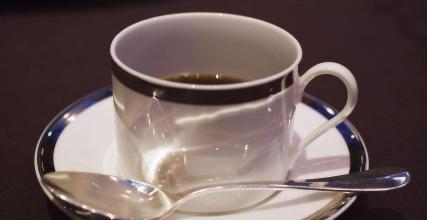Introduction to the origin and development of coffee the use of curling kettle
There are many legends about people discovering coffee. One legend is that in the 13th century, there was a prince in Ethiopia who discovered that his camels loved to eat small berries on a bush, and after eating them, they were extremely excited and energetic. So he picked some small berries himself to taste, and finally discovered this refreshing coffee drink.
coffee flower
coffee flower
。Another legend says that one day in 500 BC, an Ethiopian shepherd herded his sheep in a strange place. On a small hill, the sheep ate a small red fruit on a small tree. After returning in the evening, the sheep were abnormal in the fence. They were not as peaceful and docile as usual, but excited, restless, tearing and chirping, and even jumping all night long. The owner thought that the sheep had eaten some grass poisoning. He got up several times and lit up the lamp to look closely, but he saw that the sheep were energetic and lively, unlike the appearance of poisoning pain. The next morning, the shepherd prepared to drive the sheep to another place to graze. After opening the fence, the sheep desperately ran to the hill with small red fruits. The shepherd did not help how to whip and stop them. When the shepherd was exhausted, he had to follow the sheep to the hill. Shepherd see each sheep scramble to eat small red fruit, feel very strange, then picked some small red fruit repeatedly chewing taste, found this small red fruit sweet with some bitterness. After grazing, the shepherd felt extremely excited and could not sleep all night. He even wanted to dance with the sheep's hands and feet. The magical effect of small red fruits soon spread, Ethiopian shepherds picked small red fruits everywhere to chew, and took them to the market for sale. Later, this small red fruit developed into the most popular coffee drink in the world today.
Coffee Development Editor
coffee flower
coffee flower
In fact, Arabs began growing coffee in 525 BC, and chewing roasted coffee beans became popular in Arabia. In 890 AD, Arab merchants sold coffee beans to Yemen, and Yemen made coffee beans into a beverage for the first time. In the 15th century, coffee was introduced into Europe, Asia, and soon into America. By the 18th century, coffee was widely cultivated in tropical and subtropical regions of the world and became one of the three major beverages in the world. Coffee ranks first among the top three beverages in annual sales, three times that of cocoa and four times that of tea. Coffee has been cultivated for more than 2,000 years. However, coffee cultivation in China has only a few hundred years of experience. In 1884, coffee was introduced into Taiwan Province. At the beginning of the 20th century, overseas Chinese brought coffee back from Malaysia and planted it in Hainan Province. Later, the southern tropical and subtropical provinces began to plant coffee one after another. Although the cultivation time is relatively short, the coffee in Hainan Province and Yunnan Province of our country has superior quality and unique charm, and enjoys high reputation in the world. After some foreign businessmen buy it at a low price, it becomes a world-class beverage with expensive value after processing and selling it to the international market. The most prominent one is the small coffee planted in Yunnan Province. Because the temperature difference between day and night in Yunnan is large, it is conducive to the accumulation of its contents. Therefore, it tastes strong but not bitter, fragrant but not strong, rich in oil and fruity. Therefore, it has been praised by coffee merchants at home and abroad as "the best quality coffee in the world"

Important Notice :
前街咖啡 FrontStreet Coffee has moved to new addredd:
FrontStreet Coffee Address: 315,Donghua East Road,GuangZhou
Tel:020 38364473
- Prev

The Origin of Kopi Luwak espresso caffeine
The civet likes to choose the most ripe, sweet, juicy coffee fruit in the coffee tree as food. The coffee fruit passes through its digestive system, and only the pulp on the outside of the fruit is digested, and the hard coffee beans are then excreted intact by the civet's digestive system. In this way, in the process of digestion, there are unparalleled magical changes in the flavor of coffee beans.
- Next

The Historical Origin of the production and Development of Coffee flowers
First, the production of milk foam 1, pour the milk into the milk bubble pot, the amount should not exceed the milk bubble pot 1 big 2, otherwise the milk will overflow due to expansion when making the milk bubble. 2. Heat the milk to about 60 degrees, but not more than 70 degrees, otherwise the protein structure in the milk will be destroyed. Be careful! The lid and strainer cannot be heated directly. (for example, if you make ice foam, put the milk
Related
- Does Rose Summer choose Blue, Green or Red? Detailed explanation of Rose Summer Coffee plots and Classification in Panamanian Jade Manor
- What is the difference between the origin, producing area, processing plant, cooperative and manor of coffee beans?
- How fine does the espresso powder fit? how to grind the espresso?
- Sca coffee roasting degree color card coffee roasting degree 8 roasting color values what do you mean?
- The practice of lattes: how to make lattes at home
- Introduction to Indonesian Fine Coffee beans-- Java Coffee producing area of Indonesian Arabica Coffee
- How much will the flavor of light and medium roasted rose summer be expressed? What baking level is rose summer suitable for?
- Introduction to the characteristics of washing, sun-drying or wet-planing coffee commonly used in Mantenin, Indonesia
- Price characteristics of Arabica Coffee Bean Starbucks introduction to Manning Coffee Bean Taste producing area Variety Manor
- What is the authentic Yega flavor? What are the flavor characteristics of the really excellent Yejasuffi coffee beans?

